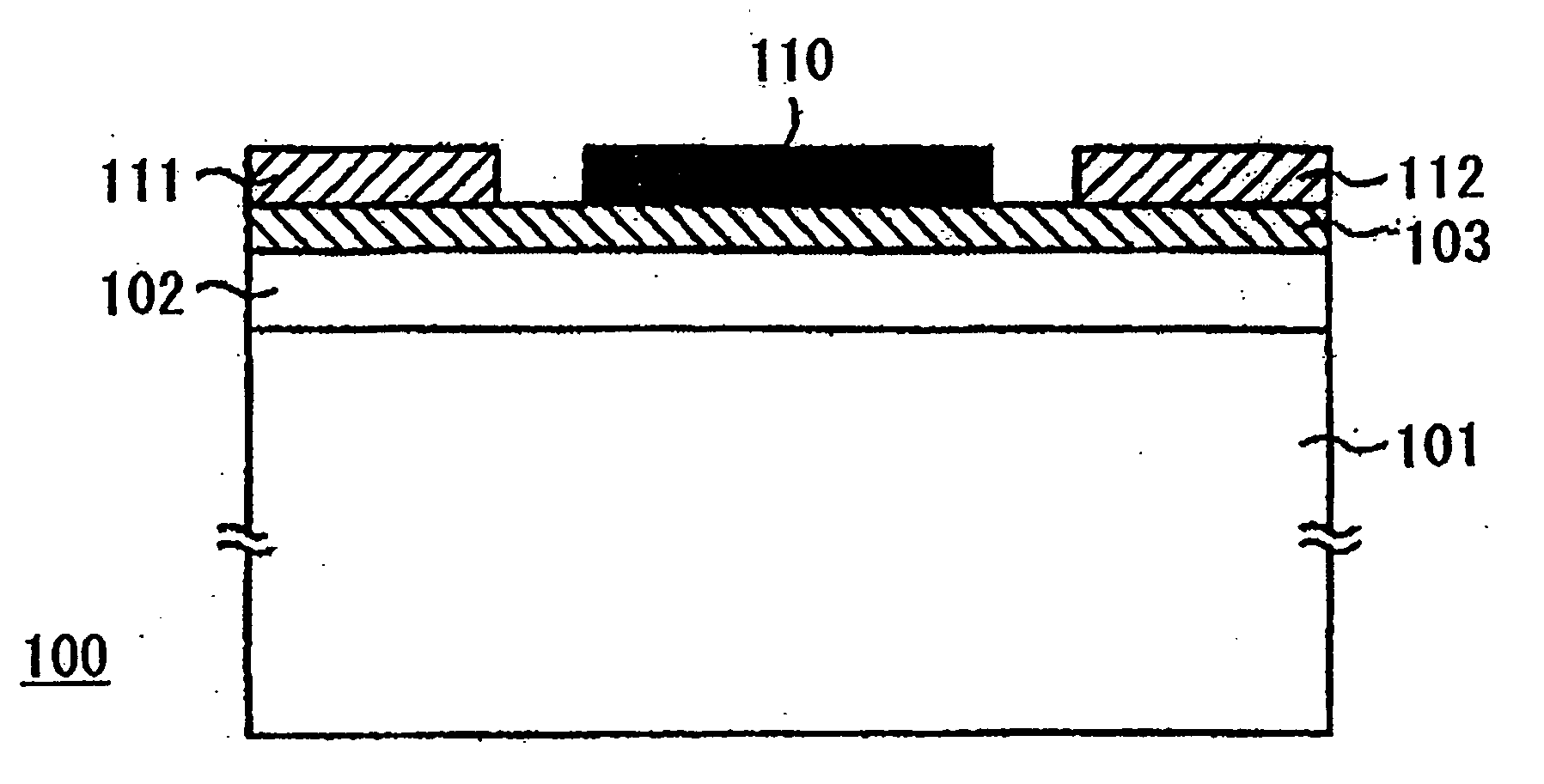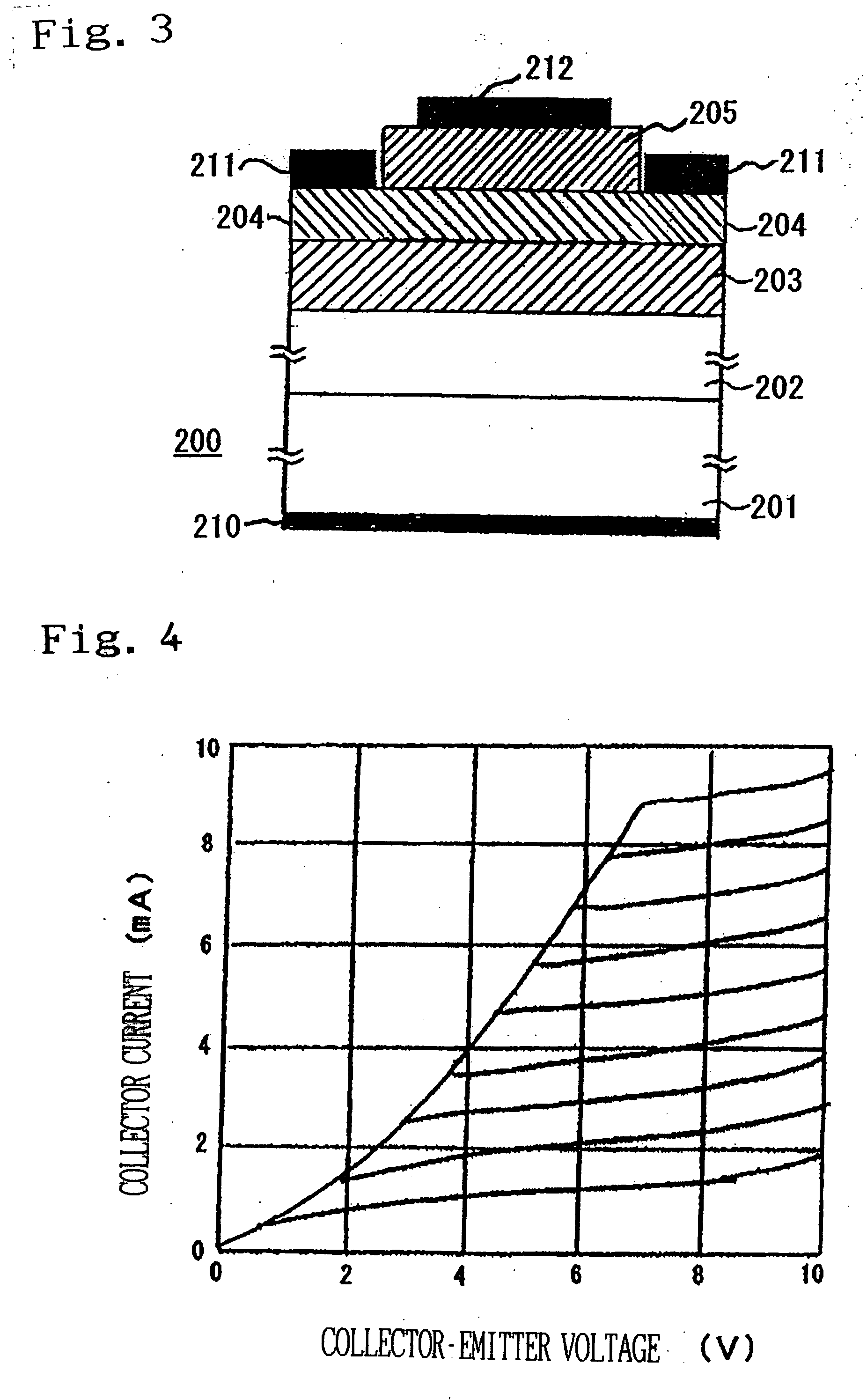Electronic devices formed on substrates and their fabrication methods
a technology of electronic devices and substrates, applied in semiconductor devices, transistors, electrical apparatus, etc., can solve problems such as serious problems, errors or trouble of electronic devices due to noise, and limit of silicon devices, and achieve the effect of high resistance to voltag
- Summary
- Abstract
- Description
- Claims
- Application Information
AI Technical Summary
Benefits of technology
Problems solved by technology
Method used
Image
Examples
first embodiment
[0033]FIG. 1 is a schematic view of a field effect transistor (100) according to the present invention. In the figure, a substrate (101) is made up of silicon. However, other materials can be used. A layer (102) of molybdenum oxide was formed on the substrate (101). The layer (102) was formed by the following steps. A molybdenum (Mo) plate was used as source and a silicon (Si) substrate were used in this example. At first, the source and the silicon substrate (101) were rinsed and dried. Then they were set in a growth chamber. At the next step, the growth chamber was heated so that a temperature at the source zone was 630° C. and that at the substrate zone was 530° C. under nitrogen atmosphere. After the source and the substrate (101) were heated to the temperatures, respectively, high-purity oxygen was flowed in the growth chamber and kept for 6 hours. A thickness of the layer (102) was 6 μm. Although the layer (102) was not intentionally doped, it was n type with a carrier concent...
second embodiment
[0037]FIG. 3 is a schematic view of a bipolar transistor (200) according to the present invention. In this embodiment, a substrate (201) consists of silicon. However other materials can be used as a substrate. On the substrate (201) a layer (202) of molybdenum oxide was formed. The layer (202) was formed by the following steps. A molybdenum (Mo) plate was used as source and silicon (Si) substrate were used in this example. At first, the source and the silicon substrate (201) were rinsed and dried. Then they were set in a growth chamber. At the next step, the growth chamber was heated so that a temperature at the source zone was 630° C. and that at the substrate zone was 530° C. under nitrogen atmosphere. After the source and the substrate (201) were heated to the temperatures, respectively, high-purity oxygen was flowed in the growth chamber and kept for 6 hours. A thickness of the layer (202) was 6 μm. Although the layer (202) was not intentionally doped, it was n type with a carri...
PUM
 Login to View More
Login to View More Abstract
Description
Claims
Application Information
 Login to View More
Login to View More - R&D
- Intellectual Property
- Life Sciences
- Materials
- Tech Scout
- Unparalleled Data Quality
- Higher Quality Content
- 60% Fewer Hallucinations
Browse by: Latest US Patents, China's latest patents, Technical Efficacy Thesaurus, Application Domain, Technology Topic, Popular Technical Reports.
© 2025 PatSnap. All rights reserved.Legal|Privacy policy|Modern Slavery Act Transparency Statement|Sitemap|About US| Contact US: help@patsnap.com



